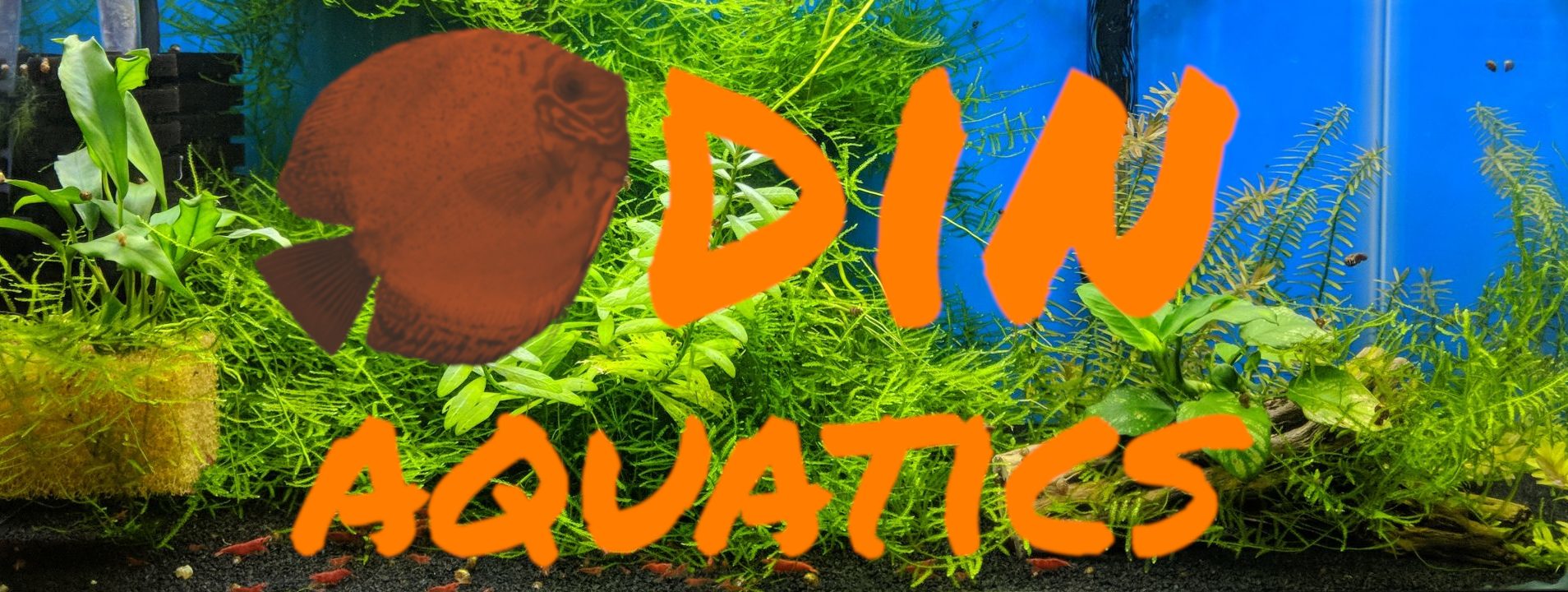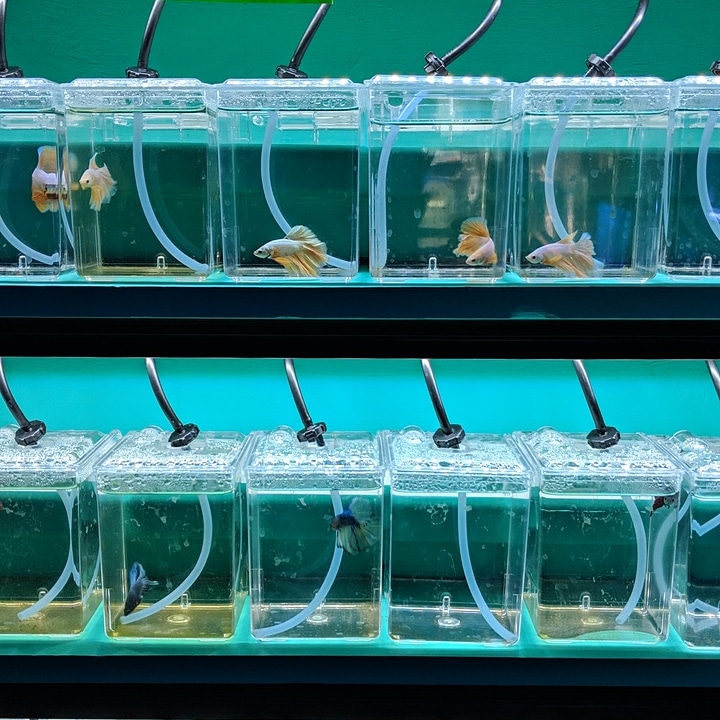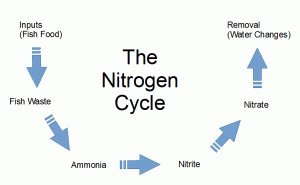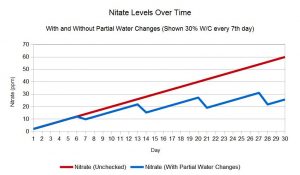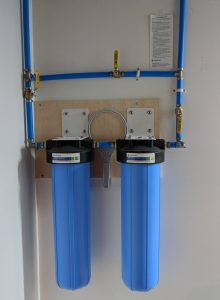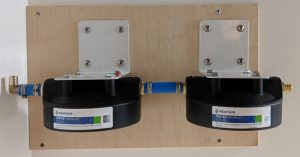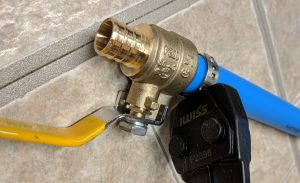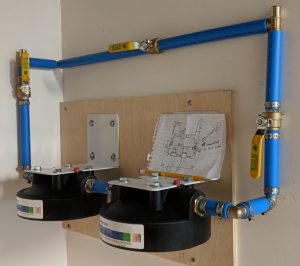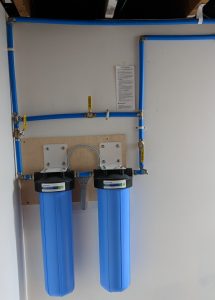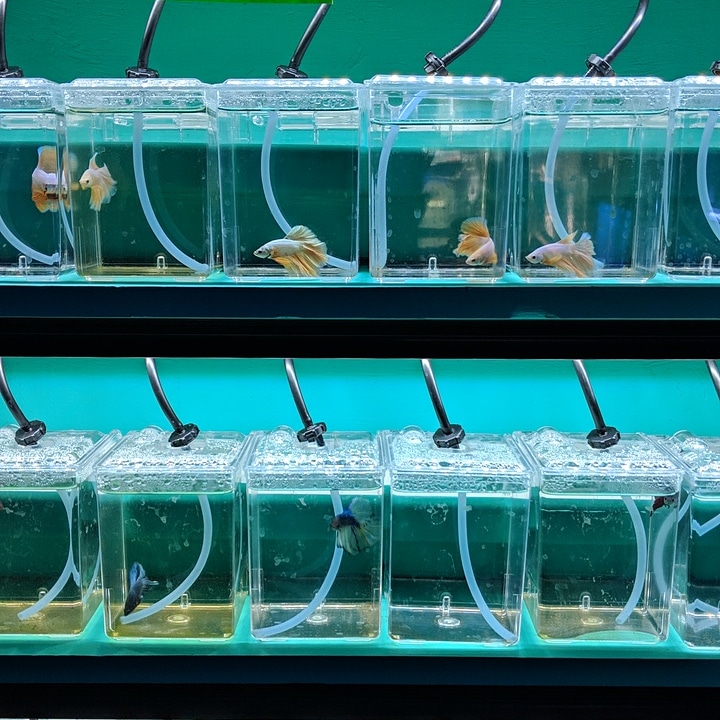
Do bettas need a filter?
Yes.
Although bettas are often seen in unfiltered bowls, they need filtration to survive longer than a few weeks. See this post on the nitrogen cycle for more info on why all fish need filtration. A big or expensive filter is not necessary. A small sponge filter like this one is sufficient for a single betta.
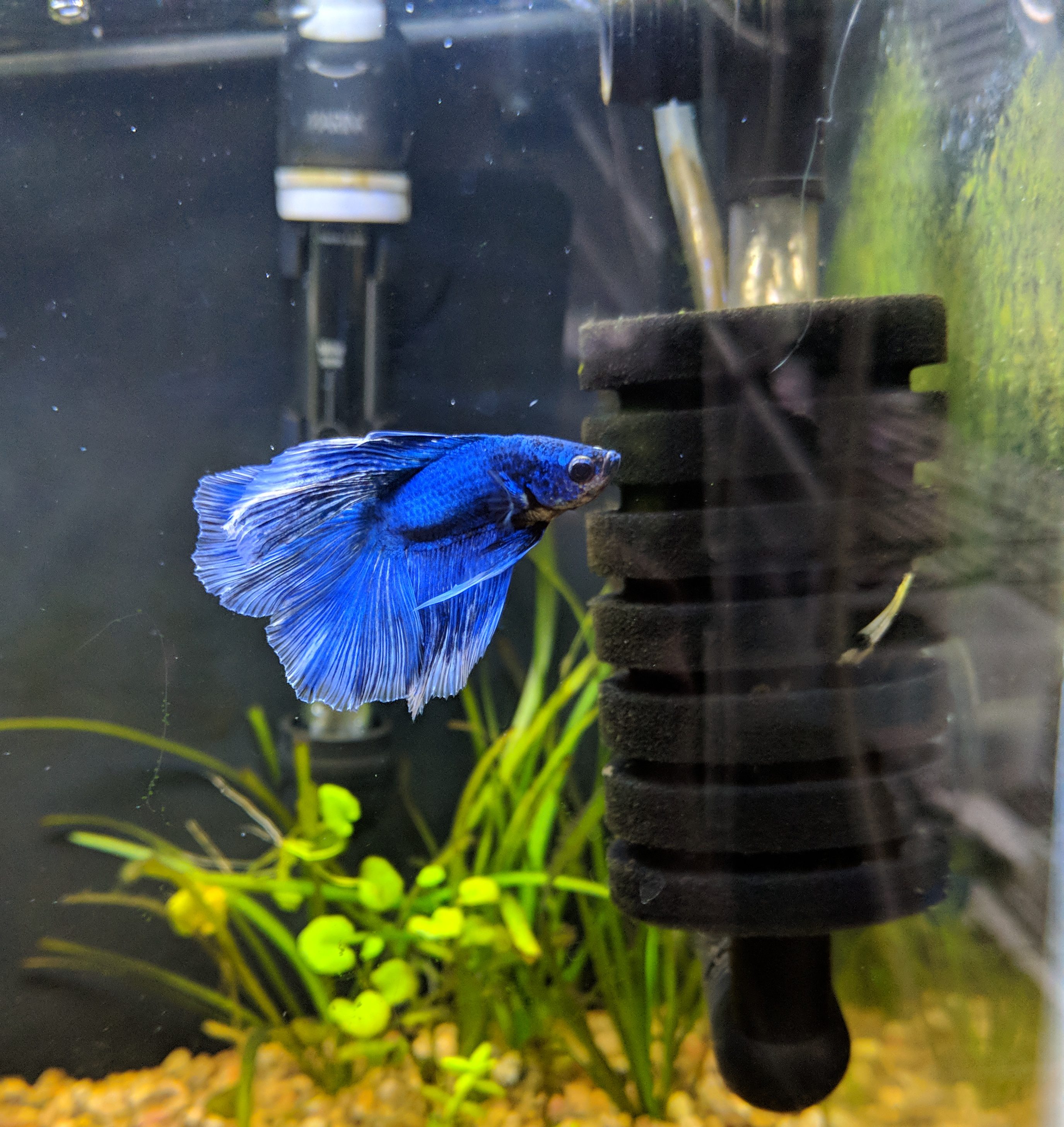
Do bettas need a heater?
Yes, unless they are kept in a room that never drops below 74 °F. Betta Splendens are native to the Chao Phraya River in Thailand. Temperatures there are consistently warm all year, ranging from 75-90 °F. If you live in a tropical climate, you may not need a heater. Betta species prefer a water temperature of around 75–82 °F.
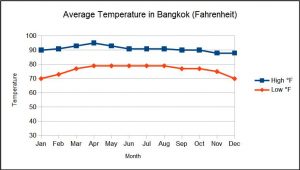
A small heater like this one will only run you about $10-$20 and will keep your betta a lot healthier than consistently cold water. Always use a thermometer so you can keep an eye on the temperature.
Can a betta live in a bowl?
Yes, if it holds at least 2 gallons of water. Not sure how much water your bowl will hold? Use a milk jug or soda bottle to measure the amount of liquid you can add. Two gallons is equivalent to about 7.5 liters. Anything smaller than this will require frequent maintenance to remove waste so that the water is not foul, and will be too small to add a filter.
Even better than a bowl, though, is a nano tank like the Fluval Spec. These small aquariums come as a kit with a filter and a light, and make a perfect home for a single male Betta Splendens.
So why do stores sell Bettas in cups?
Because money.
Bettas are a member of the gourami family, which means they are aggressive. This is why another name for the Betta Splendens is the Siamese Fighting Fish. Male bettas cannot be housed together, and they don't do well with most other species of fish. This makes housing bettas in a store properly not very cost effective. It is cheaper for a large percentage of them to die than to provide each one with adequate space in a heated and filtered system.
The other reason that bettas are so often sold in cups is that they have a special labryinth organ that allows them to take gulps of air from the surface. This is a common characteristic of anabantoids, a group which includes gouramies. Because of this organ, bettas last longer in low oxygen environments than other fish. The problem, however, is that ammonia from fish waste can still burn their gills and kill them. In a tiny, unfiltered container, ammonia levels can quickly become deadly.
The solution to this, which all pet stores should implement, is a betta barracks. This is a rack system that houses each individual male betta in a small container, but each container is plumbed together. The water is heated and filtered as it moves through this rack system. This video by Aquarium Co-Op explains how to build a DIY betta barracks. Unfortunately, this system costs money to implement. But it is far more humane than keeping fish for sale in small plastic cups.
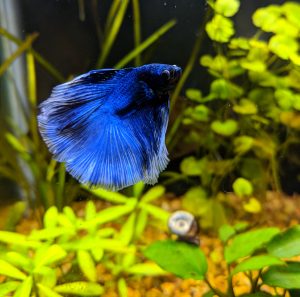
What can you do to change the way bettas are treated?
Don't buy a betta - or ideally, any fish - from big chain stores that keep them in cups. I have been to several local fish stores that had bettas in barracks racking systems. These local stores will typically have a better selection of healthy fish. The big box chains see bettas as a gateway product that allows them to sell you a bowl, chemicals, food, gravel, and decorations. As long as people are buying bettas in cups, and cheap tiny plastic bowls, they will keep selling them.

